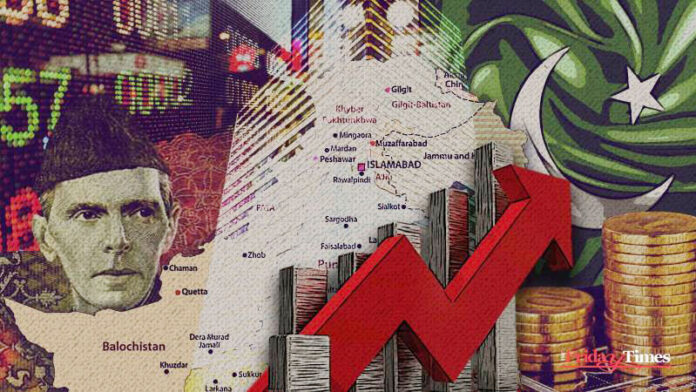Pakistan’s position as 164th on the Human Development Index reflects the entrenched struggles that hinder its journey toward true progress and human flourishing. This low ranking places Pakistan behind several countries including Zambia, Congo, Angola, and Cambodia, which, on the surface, may seem like unlikely comparisons.
The situation highlights the dire position Pakistan finds itself in, struggling with systemic issues such as malnutrition, food insecurity, high child mortality rates, and a lack of comprehensive health reforms. These issues, at their core, point to a systemic failure in effectively utilizing resources, addressing public health concerns, and implementing long-term developmental strategies.
Pakistan needs to re-prioritize its policies on public health, food security, and education to overcome its current crisis. A multi-layered approach addressing immediate needs and long-term development goals is crucial. Investments in rural health systems, modernizing agriculture, and universal access to education can break the cycle of poverty and malnutrition. The global community must support Pakistan by providing financial assistance, expertise, and knowledge sharing in agriculture and public health. Pakistan’s development challenges are significant, but with the right policy changes, commitment to long-term sustainable development, and focus on improving citizens’ health and nutrition, it can reverse its current trajectory. Empowering its people, especially those in vulnerable sectors, is crucial for Pakistan’s future
A concerning 45 percent of children under five in Pakistan suffer from stunted growth, mainly due to malnutrition, affecting their physical, cognitive, and emotional development, which impacts their future potential. Despite being an agricultural powerhouse, Pakistan has not leveraged its resources to meet the basic nutritional needs of its population. This stunting reflects not only limited access to healthy food but also a lack of education on proper nourishment. Most affected children come from low-income families, where poverty and the high cost of healthy food restrict their diet. A UN-WFP report reveals that nearly 50 million people in Pakistan are suffering from food insecurity, a shocking number that exceeds the population of 170 countries, highlighting the catastrophic scale of the crisis.
Adding to the challenge of malnutrition, food insecurity is a complicated issue in Pakistan. Significant food loss is caused by inefficient distribution and storage practices, despite the nation producing enormous supplies of wheat, rice, and sugar. This problem is made worse by inadequate infrastructure and slow market mechanisms. A sizable portion of the population suffers from malnutrition as a result of Pakistan’s emphasis on cash crops like wheat and cotton rather than nutrient-dense meals like fruits and vegetables. Urgent change is required to address this mismatch between agricultural output and nutritional demands, with an emphasis on crop diversification to increase economic returns and enhance the country’s overall nutritional status.
Pakistan’s agricultural crisis is a result of systemic inefficiencies, poor policy implementation, and lack of investment in rural areas. The government has failed to support smallholder farmers, leading to poverty cycles. The lack of investment in rural health infrastructure exacerbates malnutrition and food insecurity, making it difficult for people in remote areas to access nutritious food, healthcare, and essential services. Inadequate education also contributes to the crisis, as many families remain unaware of nutrition’s importance. The high child mortality rate, which results in 60 out of every 1,000 children dying before reaching five, is a direct result of poor healthcare, malnutrition, and limited access to basic medical services. The healthcare system is often overwhelmed, underfunded, and plagued by corruption, resulting in suboptimal care for citizens. Access to medical facilities is often restricted by geography and socioeconomic status, with rural areas being particularly underserved. The failure to prioritize maternal and child health has worsened the situation, with limited access to antenatal care and a lack of trained healthcare professionals in rural areas.
Comparing Pakistan’s situation to neighbouring countries like India can offer insights into potential solutions. India has made developments in improving food security and reducing malnutrition through large-scale nutrition programmes like the National Food Security Act. India has prioritized women’s education, which has directly impacted child nutrition and health outcomes. Educated women prioritize their children’s health, leading to improved nutritional practices and reduced child mortality rates.
Bangladesh has made progress in addressing child malnutrition through public health interventions like immunization programmes and maternal health services. This has reduced stunting and child mortality rates. The country’s success is attributed to its commitment to public health and sustainable agricultural practices. Despite limited resources, investing in rural areas and prioritizing food security has improved the nutritional status of its population.
Pakistan has been slow to implement comprehensive reforms, focusing on improving agricultural practices, investing in rural health infrastructure, and diversifying food production to address food insecurity. This requires a shift in government priorities to prioritize long-term sustainable development over short-term political gains.
Europe and the USA have been ahead in human development indicators due to their investments in healthcare, education, and infrastructure. These countries have high-quality healthcare systems, universal access to education, and robust economic structures. Pakistan, on the other hand, has faced governance issues, political instability, and economic mismanagement. In contrast, Europe and America have improved agricultural productivity, leading to better food security and nutrition. These advancements are accompanied by social safety nets to protect vulnerable members of society.
Pakistan needs to re-prioritize its policies on public health, food security, and education to overcome its current crisis. A multi-layered approach addressing immediate needs and long-term development goals is crucial. Investments in rural health systems, modernizing agriculture, and universal access to education can break the cycle of poverty and malnutrition. The global community must support Pakistan by providing financial assistance, expertise, and knowledge sharing in agriculture and public health. Pakistan’s development challenges are significant, but with the right policy changes, commitment to long-term sustainable development, and focus on improving citizens’ health and nutrition, it can reverse its current trajectory. Empowering its people, especially those in vulnerable sectors, is crucial for Pakistan’s future.






















